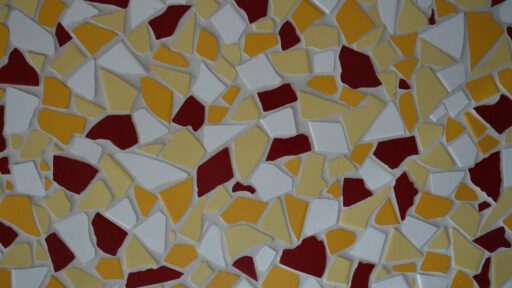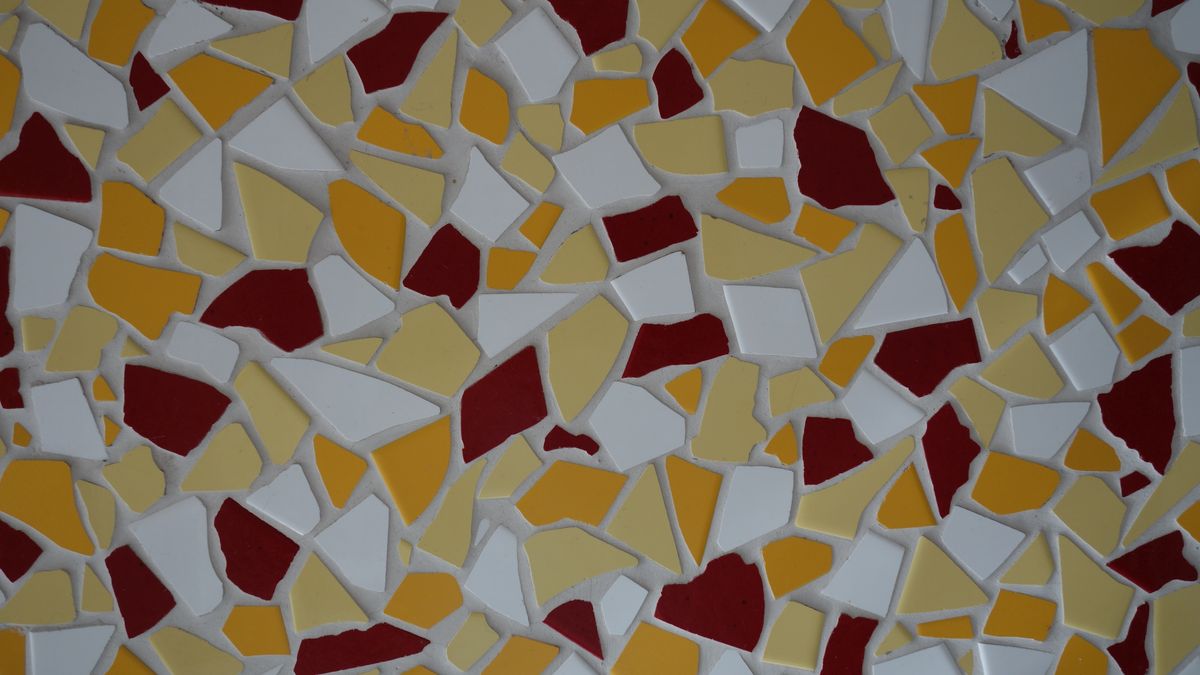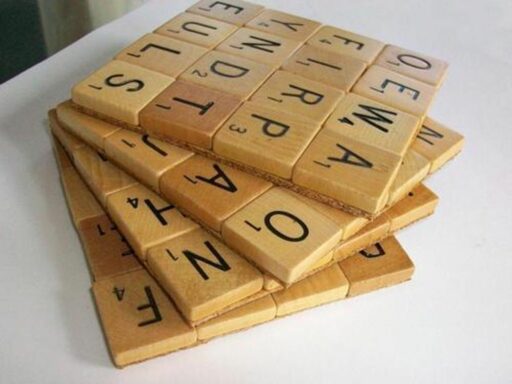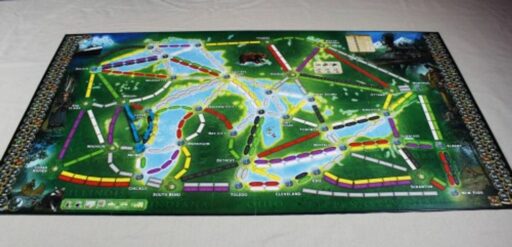Azul stands as a shining gem within the ‘Expert Games’ collection, offering a strategic challenge that goes beyond mere tile placement. This game, celebrated for its depth and elegance, requires players to navigate a labyrinth of tactical decisions and psychological maneuvers. Mastering Azul is not just about understanding the rules, but about outthinking your opponents and crafting a strategy that can withstand the unpredictable nature of the game. The following article, ‘Strategic Layering: Mastering the Azul Board Game,’ delves into the sophisticated tactics that can elevate your gameplay from novice to expert.
Key Takeaways
- Grasping Azul’s core mechanics is essential, focusing on tile drafting, scoring patterns, and managing the factory offer and the center.
- Advanced techniques such as predictive tile drafting, wall-tiling synergies, and end-game scoring maximization can significantly boost scores.
- Adaptability is key; players must learn to mitigate bad draws and counter opponents’ strategies while maintaining flexibility in their plans.
- Employing psychological tactics like reading opponents’ intentions and utilizing bluffing can provide a competitive edge in Azul.
- Consistent improvement and strategy refinement across multiple games, including mastering Azul’s variants, are crucial for long-term success.
Understanding Azul’s Core Mechanics

The Basics of Tile Drafting
In Azul, the act of tile drafting is the cornerstone of your strategy. Players select tiles from a shared pool, aiming to create patterns and score points. Understanding the types of tiles and their availability is crucial to forming a successful game plan. Here are some key points to consider when drafting tiles:
- Assess the current round’s tile distribution.
- Prioritize tiles that fit your pattern needs.
- Consider the potential future availability of tiles.
- Be aware of what your opponents might need and draft accordingly.
Remember, the goal is not just to fill your board, but to do so in a way that maximizes your scoring opportunities while minimizing wasted moves.
Drafting effectively requires a balance between offensive and defensive play. You must be adept at not only building your own mosaic but also at predicting and influencing your opponents’ choices. This dual focus can be the difference between a good player and a great one.
Scoring Patterns and Strategies
Mastering Azul’s scoring system is crucial for victory. Each tile placement on your wall scores points not only for the row but also for adjacent tiles. This creates a strategic layer where players must plan their moves to maximize their score each round.
- To score effectively, consider the following:
- Aim for completing horizontal lines, as they score more points.
- Vertical completions are valuable at the end of the game.
- Keep an eye on the bonus points for completing all tiles of a single color.
Remember, the key to a high-scoring game is not just in the number of tiles you place, but in their strategic positioning on the board.
Understanding the scoring nuances can turn a good game into a great one. For instance, a single tile can score multiple times if it completes both a row and a column. Planning for these opportunities can give you a significant advantage.
Managing the Factory Offer and the Center
In Azul, managing the factory offer and the center is a delicate balance that can greatly influence your success. Strategic placement is key, as players must decide not only which tiles to take but also which tiles to leave for others. The center becomes a melting pot of discarded tiles that can be both a treasure trove and a trap.
- Always assess the factory offer carefully, considering both your needs and what it leaves for opponents.
- Prioritize tiles that fit your pattern while also denying crucial pieces to your rivals.
- Be mindful of the potential penalty points from taking tiles you cannot place.
The center is a dynamic element of the game that requires constant vigilance. It can offer unexpected opportunities to score, but it can also lead to a surplus of tiles that will cost you points at the end of the round.
Advanced Techniques for Higher Scores

Predictive Tile Drafting
Mastering predictive tile drafting is a game-changer in Azul. Predicting the availability of tiles in future rounds allows players to plan their moves strategically, ensuring they can complete specific patterns and score big. This foresight relies heavily on understanding the game design and mechanics, which dictate the flow of tiles.
- Observe the tiles your opponents are collecting and anticipate their needs.
- Keep track of tiles that have been discarded to estimate what will come up in the next factory offer.
- Prioritize versatile tiles that fit multiple patterns on your board for greater flexibility.
By staying one step ahead, you can secure the tiles you need while potentially blocking your opponents’ plans.
Remember, the key to predictive drafting is not just about securing the right tiles for yourself, but also about influencing what options remain for your opponents. This dual focus can lead to a significant advantage as the game progresses.
Wall-Tiling Synergies
Mastering wall-tiling synergies in Azul requires a keen understanding of how each move impacts future scoring opportunities. Strategically placing tiles to maximize points not only from the immediate round but also in setting up for subsequent rounds is crucial. For instance, completing horizontal lines and specific patterns can yield significant bonuses.
- Aim to complete horizontal lines early for immediate points.
- Focus on building around the central squares for bonus points.
- Anticipate the tiles that will be available in future rounds to plan your wall.
By consistently applying these synergies, players can create a compounding effect on their scores, turning a good move into a great one.
Remember, the key to Azul is not just in the accumulation of points but in the orchestration of moves that build upon each other. This approach can often be the difference between a close loss and a commanding victory.
End-Game Scoring Maximization
Maximizing your score in the final rounds of Azul requires foresight and precision. Ensure every move contributes to your end-game scoring potential, whether by completing patterns or preparing for the final wall-tiling. Remember that the end of the game triggers when one player completes a horizontal line on their wall, so timing is crucial.
- Plan your tile placements to complete multiple lines simultaneously.
- Aim for the 7-point bonus by completing all tiles of a single color.
- Secure the 2-point bonus per completed horizontal line and the 7-point bonus for each completed vertical line.
In the last few turns, assess the state of your board and prioritize moves that will yield the highest points. Sometimes, placing tiles in the bottom row for extra points is more strategic than completing a pattern.
As the game concludes, keep an eye on your opponents’ boards. If you’re ahead, you might want to end the game quickly to prevent others from catching up. If you’re behind, consider extending the game to close the gap. The key is to be strategic when making a move that will end the game.
Mitigating Bad Draws and Adapting to Opponents

The Art of Flexible Planning
In the dynamic landscape of Azul, flexibility is the cornerstone of a robust strategy. The ability to adapt to the ever-changing tile economy can make or break your game. Players must be prepared to shift their plans based on the tiles available and the actions of their opponents. This requires a keen sense of observation and the willingness to pivot strategies at a moment’s notice.
While rigid strategies can lead to a quick downfall, flexible planning allows players to capitalize on unexpected opportunities. It’s essential to maintain a balance between your intended pattern and potential alternative scoring routes.
Here are some key aspects to consider for flexible planning:
- Always have a backup pattern in mind in case your primary strategy is disrupted.
- Pay close attention to the tiles your opponents are collecting; it can inform your next move.
- Be ready to change your focus from scoring immediate points to setting up future rounds.
- Understand that sometimes the best move is to prepare for the next round rather than scoring in the current one.
Counter-Drafting: Disrupting Opponent Strategies
Counter-drafting in Azul is a subtle art that can significantly disrupt your opponent’s strategy and give you a competitive edge. By carefully observing the patterns your opponents are aiming to complete, you can strategically draft tiles that thwart their plans. This not only hinders their progress but can also force them into taking penalty points.
- Identify the tiles your opponent needs and evaluate their importance.
- Consider the potential penalty points an opponent would incur by not completing a pattern.
- Draft tiles that serve your strategy while also blocking your opponent’s key moves.
In the dance of tile drafting, the ability to anticipate and counter your opponent’s moves can turn the tide of the game. It’s not just about building your mosaic; it’s about subtly ensuring your opponents can’t build theirs.
Remember, counter-drafting is not just about denying your opponent; it’s a balancing act. You must also ensure that you’re not sacrificing your own scoring opportunities in the process. It’s a strategic maneuver that requires foresight and a deep understanding of both your own board and your opponent’s.
Recovering from Suboptimal Tile Selections
In Azul, not every draw will align with your strategy, and sometimes you’ll find yourself with a selection of tiles that doesn’t fit neatly into your game plan. Recovering from these moments is crucial to maintaining a competitive edge. Here are some steps to help you bounce back:
- Assess your wall: Look for any patterns or colors that could be completed with the tiles you have.
- Prioritize scoring: Focus on moves that will yield points, even if they’re not ideal.
- Plan for future rounds: Consider how your current tiles can set you up for better draws in subsequent turns.
While it’s tempting to lament a poor draw, successful players pivot and adapt, turning a seemingly weak position into an opportunity for an unexpected comeback.
Remember, Azul is a game of both skill and chance. By staying flexible and keeping an eye on the evolving state of the board, you can mitigate the impact of suboptimal tile selections and remain in contention for the win.
Psychological Warfare in Azul

Reading Your Opponent’s Next Move
In the intricate dance of Azul, anticipating your opponent’s strategy is as crucial as executing your own. By closely observing their previous selections and factory choices, you can often predict their next move. This foresight allows you to plan your own picks more effectively, ensuring you’re not caught off guard.
To gain an edge, consider not just what tiles your opponent needs, but also what they might be trying to deny you. This dual focus can reveal much about their upcoming actions.
- Analyze your opponent’s past moves: Look for patterns or trends that could indicate their future choices.
- Consider their wall progress: The tiles they need to score big might be the ones they aim for next.
- Pay attention to their factory offer rejections: The tiles they leave behind can inform you about their priorities and potential next moves.
Bluffing and Misdirection
In the intricate dance of Azul, bluffing and misdirection can be as crucial as the tiles you collect. By feigning interest in certain tiles or patterns, you can manipulate the draft to your advantage, leading opponents astray. This tactic echoes the sentiment found in gaming strategies across the board, where keeping opponents guessing can deter their plans.
- Create a facade of pursuing a particular color or pattern.
- Use your actions to suggest a strategy you do not intend to follow.
- Observe and adapt to the reactions of your opponents to further your own game plan.
In the realm of Azul, the ability to adapt and mislead is often the dividing line between victory and defeat. A well-timed bluff can disrupt an opponent’s meticulously laid plans, turning the tide in your favor.
Maintaining Composure Under Pressure
In the heat of an Azul game, maintaining composure is as strategic as the game itself. Keeping a level head can be the difference between a reactionary move and a calculated decision that leads to victory. It’s essential to develop a mental resilience that allows you to stay focused on your strategy, even when the game doesn’t seem to be in your favor.
Remember, pressure can lead to hasty decisions. Take a moment to breathe and assess your board and the available tiles. This pause can provide clarity and prevent costly mistakes.
Here are some tips to help you stay composed:
- Recognize the signs of stress and have a plan to address them.
- Stay present in the game; avoid dwelling on past mistakes or worrying about future rounds.
- Practice mindfulness or relaxation techniques during gameplay to maintain a calm demeanor.
- Keep the game in perspective; it’s an opportunity to learn and improve, not just a contest to win.
Building a Winning Strategy Over Multiple Games

Learning from Past Games
Mastering Azul, like many expert games, is a journey of continuous improvement. Reflecting on past games is crucial for identifying patterns in your playstyle that may be beneficial or detrimental. Analyze your scoring trends over multiple sessions to pinpoint areas for strategic refinement. For instance, if you consistently score lower in the final rounds, consider adjusting your early-game tile drafting to set up more advantageous positions later on.
To effectively learn from past games, consider the following steps:
- Review the final board state of each game and note which patterns or color combinations worked well.
- Compare your strategies against different opponents to understand how various playstyles can influence the game’s outcome.
- Keep a log of your scores and the strategies you employed to track your progress over time.
By methodically studying your past performances, you can develop a more nuanced understanding of Azul’s mechanics and improve your decision-making in future games. This process of self-analysis will not only enhance your gameplay but also increase your enjoyment of the game as you witness your own growth as a player.
Adapting Strategies to Different Player Styles
In the dynamic landscape of Azul, recognizing and adapting to the diverse play styles of your opponents is crucial for consistent success. Each opponent presents a unique puzzle, with their tendencies and strategies influencing the flow of the game. To excel, one must be adept at identifying these styles and adjusting accordingly.
- Aggressive players often prioritize immediate scoring opportunities, potentially leaving them vulnerable to a well-timed counter-draft.
- Defensive players may focus on maintaining flexibility, making it challenging to predict their next move.
- Strategic players tend to plan several turns ahead, requiring you to think long-term to outmaneuver them.
By maintaining a keen awareness of your opponents’ patterns, you can tailor your strategy to exploit their weaknesses while reinforcing your own position. This adaptability not only enhances your gameplay but also provides a richer, more engaging experience across multiple games.
Mastering the Variants of Azul
Azul’s appeal lies not only in its core gameplay but also in its various expansions and editions, each offering a unique twist on the classic formula. Mastering these variants requires a fresh strategic approach and an understanding of the new elements they introduce. For instance, Azul: Stained Glass of Sintra challenges players with a new scoring dynamic, while Azul: Summer Pavilion adds a layer of complexity with its wildcard tiles.
To excel in these variants, consider the following points:
- Familiarize yourself with the new rules and components.
- Adapt your tile drafting strategy to accommodate the variant’s unique aspects.
- Re-evaluate scoring opportunities, as they may differ significantly from the base game.
Embrace the nuances of each Azul variant to enhance your overall gameplay experience and keep your strategies evolving.
Remember, the key to success in Azul’s variants is not just understanding the new mechanics but also being able to anticipate how they will interact with the existing ones. This knowledge, combined with practice, will lead to a deeper appreciation of Azul’s rich strategic landscape.
Conclusion
Mastering Azul, as with any game in the Expert Games collection, is a journey of strategic depth and intellectual challenge. It requires not only an understanding of the rules but also the ability to anticipate opponents’ moves and adapt strategies on the fly. The satisfaction derived from excelling at Azul is akin to conquering a complex puzzle, where every decision counts and the beauty of the game unfolds with each tile placed. Whether you’re a seasoned board game enthusiast or a newcomer eager to dive into the realm of expert-level play, Azul offers a richly rewarding experience that stands as a testament to the intricate craftsmanship of modern board gaming. Embrace the challenge, refine your strategies, and join the ranks of those who have discovered the profound enjoyment and mental stimulation that Azul and similar games from the Expert Games collection provide.
Frequently Asked Questions
What are the core mechanics of Azul?
The core mechanics of Azul involve tile drafting, pattern building, and scoring. Players take turns drafting colored tiles from factory displays to their player board and then scoring points based on how they place the tiles to decorate the palace wall. Points are scored immediately for completed rows and columns, and additional points are awarded at the end of the game for specific patterns and complete sets.
How can I improve my scoring in Azul?
To improve your scoring, focus on completing rows and columns on your wall, as well as aiming for the bonus points available for completing colored sets and patterns. It’s also important to plan several moves ahead and be adaptable to the tiles available in each round.
What is the best strategy for dealing with bad tile draws in Azul?
When faced with bad tile draws, it’s crucial to remain flexible with your strategy. Consider taking tiles that may not be ideal for your current plan but could disrupt your opponents’ strategies or provide opportunities for future rounds. Always have a backup plan for where to place tiles that don’t fit your primary strategy.
Can you explain the psychological aspects of playing Azul?
Psychological warfare in Azul can involve bluffing about your intentions to mislead opponents, reading their next moves to counteract their strategy, and maintaining composure under pressure to avoid making mistakes. It’s about outmaneuvering opponents not just on the board but also in their decision-making process.
How does one build a long-term winning strategy in Azul?
Building a long-term winning strategy in Azul involves learning from past games, understanding different player styles, and adapting your approach accordingly. It also means mastering the game’s variants and being able to apply different tactics depending on the player count and the dynamic of each game.
Are there any advanced techniques for predictive tile drafting in Azul?
Yes, predictive tile drafting involves anticipating which tiles will be available in future rounds and planning your moves accordingly. This can include tracking the tiles that have been taken and those that are left, as well as predicting opponents’ choices to ensure you can draft the tiles you need for your strategy.





